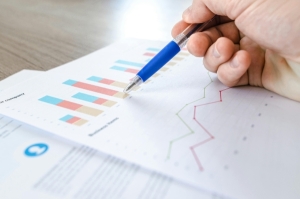New Fiocruz Study Analyzes the Cost of Alcohol Consumption in Brazil
Novembro 22, 2024New Fiocruz Study Analyzes the Cost of Alcohol Consumption in Brazil
A new study reveals that alcohol consumption in Brazil generates up to R$18.8 billion in annual costs, highlighting the urgency for preventive policies.
The study (1), conducted by the Oswaldo Cruz Foundation (Fiocruz), aimed to estimate the economic costs of alcohol consumption in Brazil, addressing both direct and indirect costs to society. Using public health data and scientific literature, the research estimated the financial impacts of alcohol consumption in the country in 2019.
The key findings indicated that the total costs attributable to alcohol consumption ranged from R$10.1 billion to R$18.8 billion. These costs were divided into direct costs, such as hospitalizations and outpatient procedures, which ranged from R$483 million to R$1.1 billion, and indirect costs, estimated between R$9.7 billion and R$17.7 billion, which include lost productivity due to absenteeism, premature deaths, and social security expenditures. Additionally, alcohol-attributable deaths were estimated to range from 47,900 to 104,800 in the year.
Another key point in the analysis is the increasing prevalence of alcohol consumption among Brazilians, with a sharp rise among women and an early onset during adolescence, leading to a significant burden of disease and death. Cardiovascular diseases, cancers, and alcohol-related accidents are some of the leading causes of hospitalizations and alcohol-attributable deaths. To support these points, the study uses data from the 2019 PNS (National Health Survey), Vigitel, Datasus, and the World Health Organization (WHO). It is important to highlight that these data on the increasing alcohol consumption over the years are significant, even though this study focused only on 2019. Thus, the cost analysis is framed under the perspective that such expenditures are likely to continue to rise.
The study presents several limitations related to the statistical model used, but these limitations, given the available data, incorporate the best evidence and approximations to adjust the analysis to the Brazilian population. Another point is that the morbidity and mortality data were obtained from Datasus, the Ministry of Health database, which may underestimate the actual scale of alcohol-related problems, especially in cases where alcohol may not be recorded as the direct cause of hospitalization. In terms of costs, the direct cost of primary health care and family expenses could not be estimated, and the indirect cost of variables such as "presenteeism" was also not included. Despite these limitations, it should be emphasized that the analysis is robust and supported by scientific literature.
In summary, the findings highlight a significant economic and social burden from alcohol consumption in Brazil, suggesting the need for public policies to control harmful use, such as those presented by the WHO in 2018 through the SAFER initiative.
References:
- Nilson, E. Estimação dos custos diretos e indiretos atribuíveis ao consumo de álcool no Brasil. Fiocruz, 2024.
History of Alcohol Policies in Brazil
Setembro 29, 2025History of Alcohol Policies in Brazil
Brazil is engaged in combating harmful alcohol consumption. Learn about our national policy.
According to the World Health Organization (WHO), having a written and specific national alcohol policy is the first sign of a country's commitment to combating the harmful use of this substance. Although a specific national alcohol policy only emerged in 2007 (Decree No. 6,117), general drug policies and laws have existed in Brazil for a long time. This material was developed by CISA with the goal of clarifying the long history of preparation and discussion on the topic.
The first mentions of substance regulation were already included in the Penal Code of the Empire of Brazil in 1851, although at the time it only covered the use and sale of medicines. The first prohibition appeared in the Republican Code of 1890, which imposed fines on anyone who sold or administered poisonous substances without a prescription, though it did not specify which substances. Brazil began enacting more specific drug laws in 1924 (Decree No. 4,294), in response to strong international pressure to control substance use. This included the addition of imprisonment penalties for those who sold opium or cocaine derivatives in the Penal Code. Within this context, Brazil joined the so-called “war on drugs” in 1971, with the creation of Law No. 5,726, in line with United Nations international conventions, aimed at repressing drug trafficking. In 1976, Law No. 6,368 expanded actions to include preventive strategies and support for drug addicts (1). Brazil’s current Constitution (1988) emphasized health as an essential condition for a dignified life, making it a fundamental right. This principle influenced the development of later drug policies.
In 2003, an interministerial technical group was created within the Ministry of Health, which in 2005 led to the creation of a Special Chamber on Alcohol Public Policy to increase public participation in the discussion. “This process enabled Brazil to develop a realistic policy, free from fundamentalist biases or trivialization of alcohol use, and consistently supported by epidemiological data, scientific advances, and respect for the country’s socio-political moment. The alcohol policy reflects society’s concern regarding the increasingly early use of this substance, as well as its negative impact on health and safety,” according to a publication from the National Secretariat for Drug Policies (2).
The issue of alcohol consumption was also addressed in the creation of the Fan Statute in 2003 (Law No. 10,671). Although it does not directly address alcoholic beverages, Article 13 establishes conditions for access and permanence in sports venues: “not to carry objects, drinks, or substances that are prohibited or likely to incite or enable acts of violence,” which potentially includes alcoholic beverages. While the law does not explicitly prohibit the sale, possession, or consumption of alcohol in stadiums, the express prohibition in Brazilian stadiums resulted from a memorandum of understanding between the Brazilian Football Confederation (CBF) and the National Council of State Prosecutors General.
In 2005, Brazil hosted the 1st Pan-American Conference on Public Policies on Alcohol, supported by the Pan American Health Organization. This led to the development of intercontinental policies and a recommendation for countries in the Americas to establish strategies and programs aimed at preventing and reducing harm associated with harmful alcohol consumption. Important changes followed, culminating in 2006 with the approval of Law No. 11,343, which “establishes the National System of Public Policies on Drugs (Sisnad); prescribes measures for prevention of misuse, treatment and social reintegration of users and dependents; sets rules for the repression of unauthorized production and illicit trafficking of drugs; defines crimes and other provisions.”
As a result of these discussions, in May 2007 Brazil adopted its National Alcohol Policy, which included intersectoral and comprehensive actions to reduce social, health, and life harms caused by alcohol consumption, as well as violence and crime associated with harmful use of alcoholic beverages. Up to that point, alcohol was included under general drug policies. However, because it is a legal substance with regulated commerce, it became necessary to create a specific policy distinct from those targeting illicit substances. The policy’s guidelines include:
- Diagnosis of alcohol consumption in Brazil;
- Treatment and social reintegration of alcohol users and addicts;
- Public awareness campaigns on the consequences of misuse and abuse of alcohol;
- Reducing alcohol demand among vulnerable populations;
- Public safety;
- Alcohol and traffic;
- Training professionals and multipliers of information on health, education, labor, and public safety;
- Partnerships with municipalities to encourage local-level actions; and
- Alcohol advertising (2).
Subsequent complementary laws were created, particularly regarding traffic safety, due to the high rates of morbidity and mortality from drinking and driving. In 2008, Brazil amended the Brazilian Traffic Code through Law No. 11,705 (commonly known as the “Dry Law”), imposing stricter penalties on drivers caught under the influence of alcohol. Any detectable amount of alcohol became grounds for administrative penalties such as fines, vehicle seizure, and a 12-month suspension of the driver's license. Those with a blood alcohol concentration of 0.6 g/L or higher could also face criminal penalties (2). Additionally, the law prohibited the sale and serving of alcoholic beverages for on-site consumption along federal highways and adjacent areas with access to highways (excluding urban areas). In 2012, the Dry Law became stricter, expanding the types of evidence that could be used to prove drunk driving. On December 19, 2017, Law No. 13,546 was enacted, introducing harsher penalties for drivers who committed involuntary manslaughter or caused serious or very serious bodily harm under the influence of alcohol or other psychoactive substances that cause dependence.
In 2009, the federal government launched the Emergency Plan to Expand Access to Treatment and Prevention of Alcohol and Other Drugs, incorporating such services into Brazil’s Unified Health System (SUS). Support was further expanded by Ordinance 3088 (December 23, 2011), which enabled access to the psychosocial care network for users of alcohol and other drugs.
On March 17, 2015, Law No. 13,106/2015 was enacted, making it a crime to offer alcoholic beverages to minors, whereas previously it was only considered a misdemeanor.
As we have seen, the development of Brazil’s national alcohol policy followed a complex and intense trajectory and has led to important progress in preventing harmful use and supporting individuals with alcohol dependence, as well as in making laws more appropriate and specific. The current model is based on educational measures to warn about the effects of drug use and on community services for recovery and social reintegration of users. Finally, Brazil has committed to the WHO’s voluntary goal of reducing harmful alcohol consumption by 10% by 2025, and this set of measures aims to help the country meet that target.
References:
(1) Santos JAT, Oliveira MLF. Políticas públicas sobre álcool e outras drogas: breve resgate histórico. J Nurs Health, Pelotas (RS) 2012 jan/jun;1(2):82-93.
(2) Paulina do Carmo Arruda Vieira Duarte, Carla Dalbo
National Survey Shows Decrease in Alcohol Consumption Among Adults and Increase Among Teen Girls
Outubro 21, 2025National Survey Shows Decrease in Alcohol Consumption Among Adults and Increase Among Teen Girls
The 3rd National Survey on Alcohol and Drugs (LENAD III), released on 09/24/2025 by the Ministry of Justice and Public Security in partnership with the Federal University of São Paulo (UNIFESP), reveals significant changes in alcohol consumption patterns in Brazil. While the proportion of adults who drink has decreased compared to previous data, consumption among teenagers has grown, especially among girls.
The study interviewed 16,608 people aged 14 and older across all regions of the country. The results indicate that although fewer Brazilians are drinking, among those who do consume alcohol, the pattern of abusive use remains high.
Decrease Among Adults
Among the adult population, 61.2% have consumed alcohol at least once in their lifetime. Of these, 42.5% reported drinking in the past year. Compared to 2012, the proportion of Brazilians who drink dropped from 47.7% to 42.5% in 2023, representing a significant reduction in the prevalence of adult drinkers. Beer is the most consumed beverage among adults, accounting for 73.5% of preferences.
Among drinkers, the average consumption is 5.3 drinks per occasion. However, because consumption patterns vary greatly, it is important to note the median, which was 3 drinks, with more than half of the people consuming up to this amount.
Binge Drinking
According to the report, binge drinking—characterized by consuming 4 or 5 drinks within 2 hours—was 14.2% in the general population (19.8% among men and 9% among women). Among drinkers only, the prevalence was 32.2%. The prevalence of people who reported heavy episodic drinking—defined as consuming 60g or more of pure alcohol (6 drinks) on at least one occasion in the past year—was 34.7% in the general population, higher among men (49.1%) than women (21.3%). Additionally, 60.3% of drinkers experienced at least one episode of heavy episodic drinking (6 or more drinks on one occasion) in the past year.
The region with the highest prevalence of risky consumption (AUDIT score of 8 or above) was the Central-West at 16.3%, followed by the Northeast (12.5%), Southeast (11.6%), North (11.4%), and South (9%).
Early and Abusive Consumption Among Teenagers
Among adolescents aged 14 to 17, there has been a continuous decline in both lifetime alcohol use and past-year use across the three LENAD editions. However, more than half of Brazilian youth (56%) tried alcohol before the legal age, and about one in four (25.5%) started regular consumption during this phase of life.
Among adolescents, the proportion reporting regular binge drinking (5 or more drinks on one occasion) dropped significantly, from 44.0% in 2006 and 42.7% in 2012 to 23.7% in 2023. However, heavy alcohol consumption (60g or more on one occasion) increased among minors, rising from 28.8% to 34.4% in 2023.
Girls stand out for having higher rates in all forms of consumption: 29.5% have tried alcohol (compared to 25.8% of boys), 21.6% drank in the past year (16.8% of boys), and 5.5% of girls have engaged in binge drinking (versus 3.5% of boys). This pattern suggests a behavioral shift, with greater vulnerability among girls. According to the report, “between 2006 and 2012, girls showed similar prevalence rates to boys, and in 2023, they recorded significantly higher values compared to male adolescents. This result reinforces the inversion of the pattern observed in adults, where consumption remains consistently higher among males.”
In addition to the increase in heavy drinking, data also show a rise in the percentage of adolescents with Alcohol Use Disorder (AUD), from 4.6% in 2012 to 5.7% in 2023. This means that although fewer adolescents are drinking overall, those who do are consuming more intensely.
The survey results show that while fewer adults are drinking, alcohol consumption among teen girls has increased worryingly. Furthermore, many individuals with risky consumption patterns do not attempt to reduce their intake or seek treatment, revealing low awareness of the problem. These findings highlight the importance of investing in prevention, information, and accessible care, especially to protect young people and reduce the impacts of alcohol on individuals and society.
References:
Universidade Federal de São Paulo (UNIFESP). (2025). Terceiro Levantamento Nacional de Álcool e Drogas (LENAD III): Caderno Temático - Resultados Consumo de Álcool na População Brasileira. UNIFESP.




